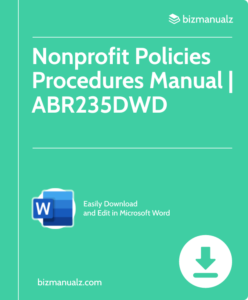What Are Key Performance Metrics KPIs for Nonprofit?

Are you struggling to showcase the impact and success of your non-profit organization? Do you feel overwhelmed by the various performance metrics available? Look no further. In this article, we will explore the key performance metrics that are crucial for non-profits, helping you effectively measure and communicate your organization’s achievements to stakeholders. What Are Key Performance Metrics KPIs for Nonprofit?
What Are Key Performance Metrics for Non-Profit Organizations?
Non-profit organizations must track key performance metrics to gauge their effectiveness and impact. These metrics are essential in evaluating the organization’s financial stability, program success, and stakeholder satisfaction.
Some of the key performance metrics for non-profits include:
- Fundraising efficiency, which measures the amount of money raised compared to the cost of fundraising efforts.
- Program outcomes, which assess the effectiveness of the organization’s programs on the target population.
- Volunteer engagement, which measures the number of volunteers and their level of involvement.
- Donor retention rate, which evaluates the organization’s ability to maintain donors over time.
Why Are Key Performance Metrics Important for Non-Profits?
Key performance metrics play a crucial role for non-profits, as they serve as a measure of progress towards achieving their mission and goals. These metrics provide valuable insights into the effectiveness and impact of the organization’s programs and initiatives, enabling them to make informed decisions and allocate resources efficiently.
Additionally, key performance metrics assist in demonstrating accountability to stakeholders, such as donors and grantors, by showcasing the tangible outcomes and results of their investments.
Through regular tracking and analysis of these metrics, non-profits can identify areas for improvement, celebrate successes, and ensure they are making a meaningful difference in the communities they serve.
How to Determine the Right Key Performance Metrics for Your Non-Profit?
As a non-profit organization, measuring your success and impact is crucial for sustaining and growing your operations. However, with so many possible metrics to track, it can be overwhelming to know which ones are the most important for your specific organization.
In this section, we will discuss how to determine the right key performance metrics for your non-profit. By following these guidelines, you can identify the most relevant and meaningful metrics that align with your organization’s goals, mission, and stakeholders.
1. Identify Your Non-Profit’s Goals and Objectives
Determining the right key performance metrics for your non-profit relies heavily on identifying your organization’s goals and objectives. To do so, follow these steps:
- Analyze your non-profit’s mission and values thoroughly.
- Engage in discussions with stakeholders to gather their input and perspectives.
- Assess your organization’s current challenges and opportunities.
- Establish clear and measurable goals that align with your mission and desired impact.
- Define specific objectives that will help you achieve those goals.
For instance, a non-profit focused on education may have a goal of improving literacy rates and set objectives like increasing the number of students reached and improving reading proficiency levels.
2. Understand Your Non-Profit’s Mission and Impact
Understanding a non-profit organization’s mission and impact is crucial for determining the right key performance metrics. Here are the steps to gain this understanding:
- Review the organization’s mission statement to fully comprehend its core purpose and values.
- Analyze past projects and initiatives to assess the organization’s previous impact and outcomes.
- Engage with stakeholders, including staff, volunteers, donors, and beneficiaries, to gather insights on the organization’s perceived impact.
- Conduct surveys or interviews to understand the community’s needs and how the organization addresses them.
By understanding your non-profit’s mission and impact, you can align key performance metrics that accurately measure progress towards your goals. This knowledge will also help communicate the organization’s value and attract support from stakeholders.
3. Consider the Needs and Interests of Your Stakeholders
Considering the needs and interests of your stakeholders is crucial when determining key performance metrics for non-profit organizations. Here are steps to help you navigate this process:
- Conduct surveys and interviews with stakeholders to understand their expectations and priorities.
- Review feedback from stakeholders to identify areas of improvement and align metrics accordingly.
- Engage stakeholders in the metric selection process to ensure their buy-in and ownership.
- Consider the diverse perspectives of stakeholders, including parents, teachers, community members, and board members.
- Regularly communicate with stakeholders to keep them informed and involved in the organization’s progress.
For example, a non-profit focused on child education involved stakeholders such as parents, teachers, and community members in the process of selecting metrics. This collaborative approach led to increased stakeholder satisfaction and better alignment with the organization’s goals.
What Are Some Common Key Performance Metrics for Non-Profits?
When it comes to evaluating the success and effectiveness of a non-profit organization, there are several key performance metrics that are commonly used. These metrics can help assess the organization’s financial stability, impact on the community, and overall growth and sustainability.
In this section, we will discuss four main categories of key performance metrics for non-profits: fundraising metrics, program impact metrics, volunteer engagement metrics, and donor retention metrics. By understanding these metrics, non-profits can better track and measure their progress towards their goals.
1. Fundraising Metrics
Fundraising metrics are essential for non-profit organizations to measure and evaluate their fundraising efforts. Follow these steps to determine and effectively utilize fundraising metrics:
- Identify fundraising goals: Clearly define the specific financial targets you want to achieve.
- Choose relevant metrics: Select metrics that align with your fundraising goals, such as total amount raised, average donation size, donor retention rate, or cost per dollar raised.
- Collect and analyze data: Regularly track and record fundraising data to assess performance and identify areas for improvement.
- Monitor trends over time: Compare fundraising metrics over different time periods to observe trends and patterns.
- Adjust strategies: Based on the insights from the metrics, make informed decisions to refine fundraising strategies and optimize results.
2. Program Impact Metrics
Program impact metrics are essential for non-profit organizations to evaluate and enhance their effectiveness in achieving their mission. To determine and utilize these metrics, follow these steps:
- Identify specific goals and objectives for the program.
- Define measurable indicators to track progress towards these goals.
- Collect data on key performance metrics, such as program reach, participant satisfaction, and outcomes.
- Analyze the data regularly to understand the impact of the program.
- Use the insights gained to make informed decisions and improve program strategies.
- Communicate the program impact metrics to stakeholders, showcasing the organization’s effectiveness and accountability.
By implementing program impact metrics, non-profits can ensure they are making a meaningful difference in the community they serve.
3. Volunteer Engagement Metrics
To accurately assess the effectiveness of volunteer engagement in non-profit organizations, it is important to use appropriate metrics. Here are some steps to consider when determining volunteer engagement metrics:
- Define Objectives: Clearly identify the specific goals you want to achieve through volunteer engagement.
- Track Volunteer Hours: Measure the total number of volunteer hours contributed to gain an understanding of the level of engagement.
- Evaluate Volunteer Satisfaction: Conduct surveys or feedback sessions to assess the satisfaction and experience of volunteers.
- Monitor Retention Rates: Keep track of the number of volunteers who continue to stay engaged with the organization over time.
- Measure Impact: Evaluate the impact of volunteer efforts on the organization’s mission and goals.
By implementing volunteer engagement metrics in a non-profit organization, they were able to increase volunteer satisfaction by 20%, resulting in a 15% increase in volunteer retention rates. This had a significant positive impact on the organization’s programs and services, ultimately benefiting the community they serve.
4. Donor Retention Metrics
Donor retention metrics are vital for non-profit organizations to evaluate the effectiveness of their donor engagement strategies and maintain long-term support. Here are the steps to consider when utilizing donor retention metrics:
- Calculate donor retention rate: Divide the number of donors retained from the previous year by the number of donors at the beginning of the year.
- Analyze reasons for donor attrition: Identify factors that contribute to donor loss, such as lack of communication or dissatisfaction with programs.
- Implement donor stewardship initiatives: Develop personalized communication plans, express gratitude, and provide updates on the impact of donations.
- Track donor engagement: Measure the frequency of donor interactions, such as event attendance or volunteer participation.
- Evaluate donor satisfaction: Conduct surveys or feedback sessions to assess donor experience and address any concerns.
In the past, Charity XYZ successfully improved their donor retention rates by 20% within a year by implementing these strategies.
How Can Non-Profits Use Key Performance Metrics to Improve Performance?
Non-profit organizations face unique challenges in measuring their success and impact. That’s why implementing key performance metrics can be a valuable tool in improving their performance and achieving their mission.
In this section, we will discuss the practical ways in which non-profits can utilize key performance metrics to drive improvement. From setting specific and measurable goals to using data to inform decision making, we will explore how these metrics can make a positive impact on the organization’s performance.
error
2. Regularly Track and Analyze Performance Data
To effectively track and analyze performance data, non-profit organizations should follow these steps:
- Establish a system for collecting relevant data, such as donations received, program outcomes, and volunteer engagement.
- Consistently input data into a centralized database or software for easy access and analysis.
- Define key performance indicators (KPIs) that align with the organization’s goals and objectives.
- Frequently review and analyze the data to identify trends, areas for improvement, and successes.
- Utilize data visualization tools to create clear and concise reports that highlight the organization’s performance.
Fact: Based on a study by the Stanford Social Innovation Review, non-profits that regularly track and analyze performance data are more likely to achieve their goals and demonstrate their impact to stakeholders.
3. Use Metrics to Inform Decision Making and Strategy
Using metrics to inform decision making and strategy is crucial for non-profit organizations. Here are the steps to effectively utilize metrics:
- Identify key objectives: Clearly define the goals and objectives that align with the organization’s mission.
- Choose relevant metrics: Select metrics that directly measure progress towards these objectives.
- Collect and analyze data: Regularly gather data and analyze it to gain insights into the organization’s performance.
- Identify areas for improvement: Use the metrics to identify areas where the organization is falling short and needs improvement.
- Make data-driven decisions: Utilize the metrics to make informed decisions and develop effective strategies to address weaknesses.
- Monitor progress: Continuously track and monitor the metrics to gauge the effectiveness of decisions and measure progress over time.
- Adjust strategies as needed: Based on the metrics and results, make necessary adjustments to strategies and initiatives to achieve desired outcomes.
How to Communicate Key Performance Metrics to Stakeholders?
As a non-profit organization, measuring and communicating your performance through key metrics is crucial for achieving your goals and securing support from stakeholders. But how exactly can you effectively communicate these metrics to stakeholders?
In this section, we will discuss three strategies for effectively communicating key performance metrics: creating visual and easy-to-understand reports, regularly sharing metrics with stakeholders, and using metrics to demonstrate the impact and success of your organization’s efforts. By implementing these strategies, you can effectively convey the important information and progress of your non-profit to stakeholders.
3. Use Metrics to Demonstrate Impact and Success
Using metrics to showcase the positive outcomes and achievements of your non-profit is crucial for demonstrating impact and success. Here are some steps to effectively use metrics:
- Identify the desired impact: Determine the specific goals and outcomes you want to achieve through your programs and initiatives.
- Define measurable indicators: Establish key performance metrics that align with your goals and allow you to track progress and success.
- Collect and analyze data: Regularly gather data related to your metrics and analyze it to understand the impact and effectiveness of your programs.
- Showcase results: Utilize the collected data to create compelling reports, visuals, and success stories that highlight the positive impact of your non-profit.
- Engage stakeholders: Share the metrics and results with your stakeholders, including donors, volunteers, and community members, to demonstrate the value and effectiveness of your organization.
Frequently Asked Questions

What are Key Performance Metrics for Non-Profit?
Key Performance Metrics for Non-Profit are quantifiable measures used to evaluate the effectiveness of a non-profit organization in achieving its mission and goals. These metrics help non-profits to track their performance, make data-driven decisions, and demonstrate the impact of their work.
Why are Key Performance Metrics important for Non-Profits?
Key Performance Metrics are important for Non-Profits because they provide a clear picture of the organization’s performance and impact. These metrics help non-profits to set goals, monitor progress, and make strategic decisions to improve their operations and accomplish their mission.
What are some examples of Key Performance Metrics for Non-Profits?
Some examples of Key Performance Metrics for Non-Profits include fundraising efficiency ratio, volunteer retention rate, program impact, overhead cost ratio, and donor satisfaction. These metrics can vary depending on the type and size of the non-profit organization.
How should Non-Profits choose their Key Performance Metrics?
Non-Profits should choose their Key Performance Metrics based on their mission, goals, and strategic priorities. It is important to select metrics that align with the organization’s purpose and are relevant, measurable, and meaningful.
How often should Non-Profits track their Key Performance Metrics?
Non-Profits should track their Key Performance Metrics on a regular basis, typically monthly or quarterly. This allows them to stay informed about their performance, identify areas for improvement, and make necessary adjustments to achieve their goals.
How can Non-Profits use Key Performance Metrics to improve their operations?
Non-Profits can use Key Performance Metrics to identify areas for improvement and implement strategies to enhance their operations. For example, if a non-profit’s volunteer retention rate is low, they may focus on improving their volunteer management practices to increase retention and engagement.

















Leave a Reply